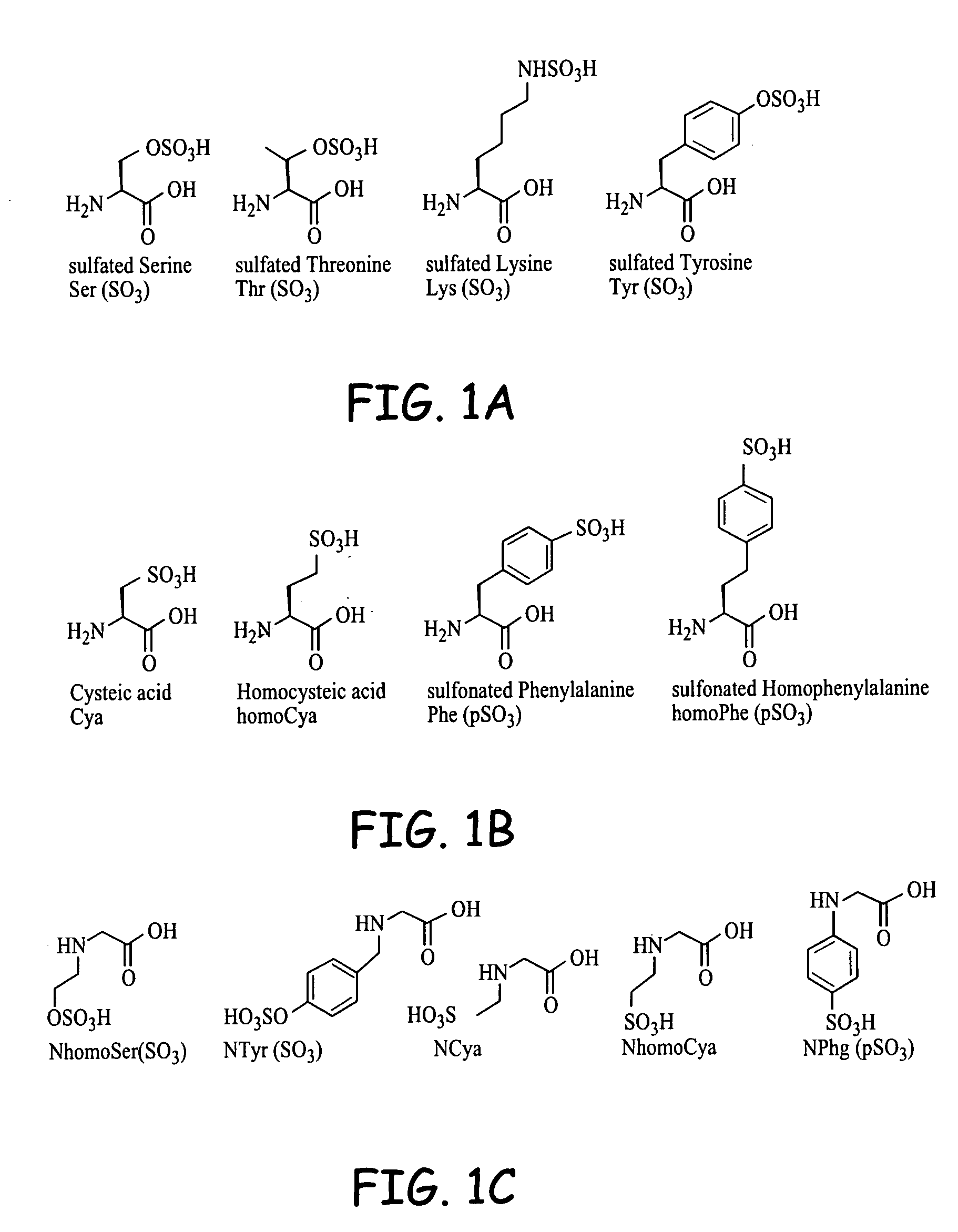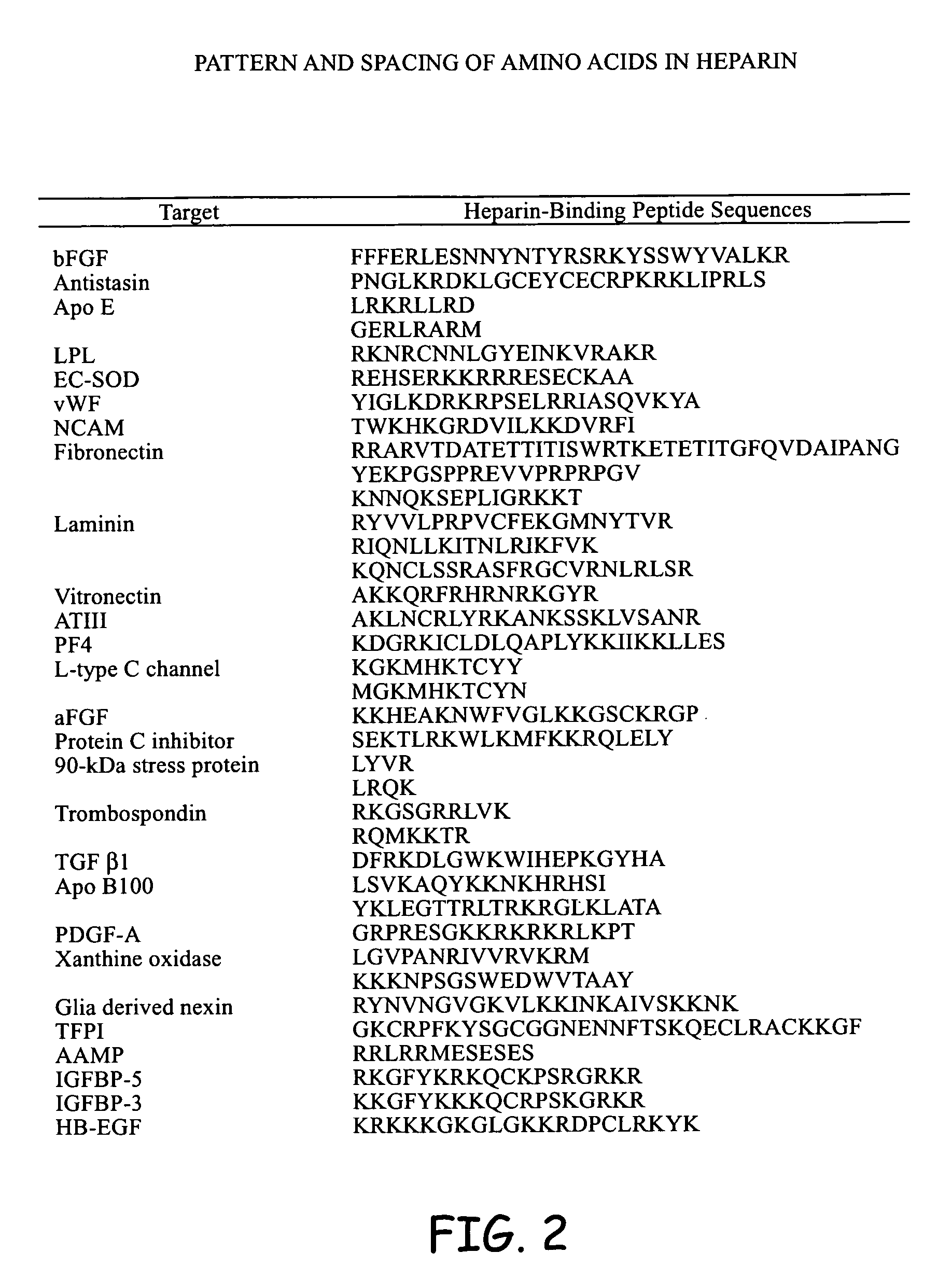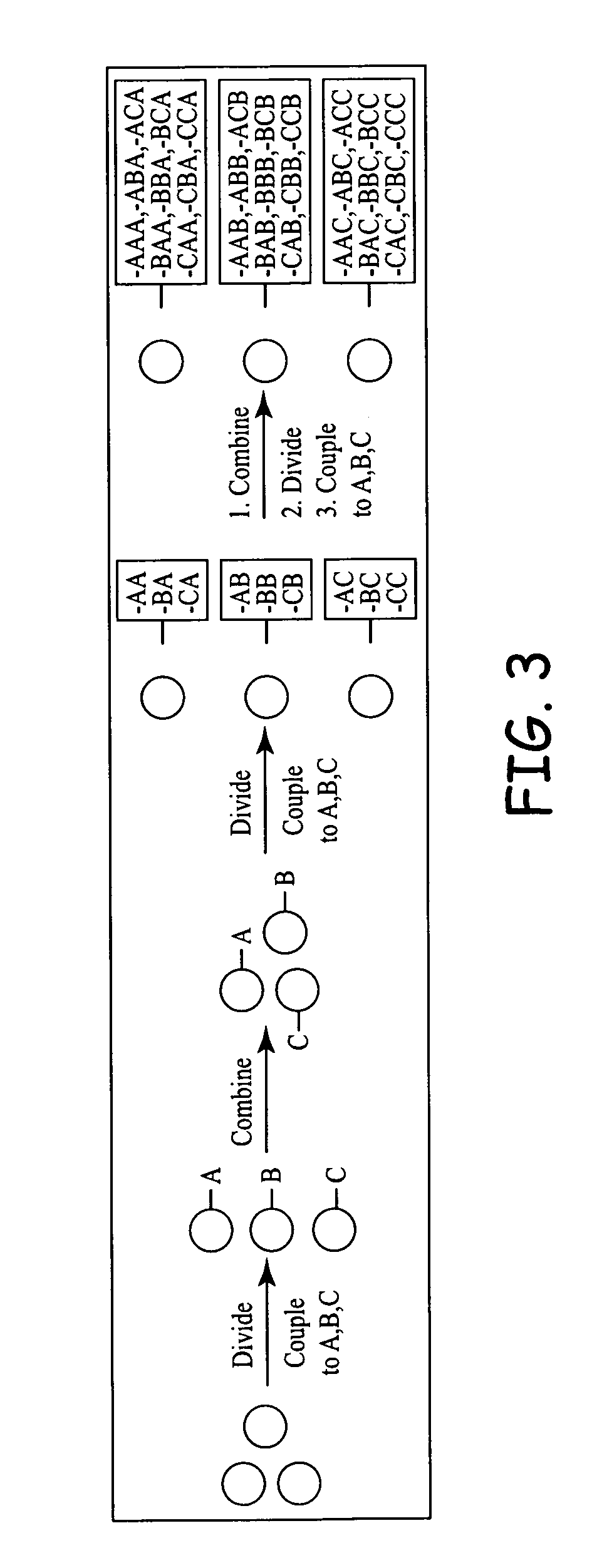Compositions and methods for use of bioactive agents derived from sulfated and sulfonated amino acids
- Summary
- Abstract
- Description
- Claims
- Application Information
AI Technical Summary
Benefits of technology
Problems solved by technology
Method used
Image
Examples
example 1
Production of Ligands for VEGF Target
[0079]Sulfated peptides assembled into a library according to a split-pool synthesis approach were used to produce ligands that bind to VEGF. The synthesis was semi-random, with a portion of the sequences in the library being rationally chosen to make peptides that bind with high affinity to VEGF.
Library Synthesis
[0080]Fmoc-Gly-Gly-Gly-Gly-PEGA resin was prepared by standard manual fluorenylmethoxycarbonyl (Fmoc) solid phase peptide synthesis by subjecting amino polyethylene glycol acrylamide (PEGA) resin (3.6 g, 0.22 mmol) to Fmoc-Gly-OH (0.26 g, 0.86 mmol), 1-hydroxybenzotriazole (HOBT, 0.12 g, 0.86 mmol), 2-(1H-benzotriazole-1-yl)-1,1,3,3-tetramethyluronium hexaflurophosphate (HBTU, 0.33 g, 0.86 mmol), and N,N-diisopropylethylamine (DIEA, 0.3 mL, 1.7 mmol) a total of 4 times. The Fmoc-Gly-Gly-Gly-Gly-PEGA resin (0.22 mmol) was then split into 9 equal portions and loaded into 9 wells of a 48 well, fritted plate. The resin was swelled for 1 h wi...
example 2
Production of Ligands for Binding ATIII
[0098]Sulfated peptides assembled into a library made according a deconvolution strategy were used to produce ligands that bind to ATIII. This Example demonstrates that small sulfated peptides that bind to ATIII can be produced by an embodiment employing a combinatorial library synthesis approach. Various positions were not varied during the library synthesis process for the sake of convenience.
Library Synthesis
[0099]The synthesis of the sulfated decapeptide libraries was performed in a FLEXCHEM 96 well reactor block (Robinson Scientific). The Fmoc / tert-Butyl or Fmoc / Boc protection strategy was used on a PEGA-resin (NOVABIOCHEM), a PEG based resin with a very low fluorescence background and well permeable for macromolecules like proteins. The methods of Example 1 were followed unless otherwise indicated. After final Fmoc-removal, the N-terminus was acetylated using acetic acid anhydride, 1-hydroxybenzotrizole (HOBt) and N,N-diisopropylethylamin...
example 3
Ligands for VEGF
[0107]This Example demonstrates that embodiments using sulfated peptides in the systems and methods of the invention produce ligands that bind with high affinities to the target VEGF, an important endothelial cell mitogen. This Example follows the methods of Example 1 unless otherwise stated.
Combinatorial Library Synthesis
[0108]A library of peptides having 7 amino acid positions was synthesized. The first three amino acids were varied using the same 9 amino acids used in Example 1. The other four amino acids of the 7 positions were fixed to be Gly-Tyr(SO3)Asp-Tyr(SO3), a sequence chosen from the results of the library of Example 1. The same amino acids and conditions were used to synthesize this library as for the library of Example 1, with the exception that Fmoc-Gly-Tyr(SO3)Asp-Tyr(SO3)-Gly-Gly-Gly-Gly-PEGA was utilized as the starting resin and the coupling was repeated a total of 3 times. The synthesis resulted in many copies of 93 or 729 different peptides.
Scree...
PUM
| Property | Measurement | Unit |
|---|---|---|
| Molar density | aaaaa | aaaaa |
| Molar density | aaaaa | aaaaa |
| Hydrophobicity | aaaaa | aaaaa |
Abstract
Description
Claims
Application Information
 Login to View More
Login to View More - Generate Ideas
- Intellectual Property
- Life Sciences
- Materials
- Tech Scout
- Unparalleled Data Quality
- Higher Quality Content
- 60% Fewer Hallucinations
Browse by: Latest US Patents, China's latest patents, Technical Efficacy Thesaurus, Application Domain, Technology Topic, Popular Technical Reports.
© 2025 PatSnap. All rights reserved.Legal|Privacy policy|Modern Slavery Act Transparency Statement|Sitemap|About US| Contact US: help@patsnap.com



